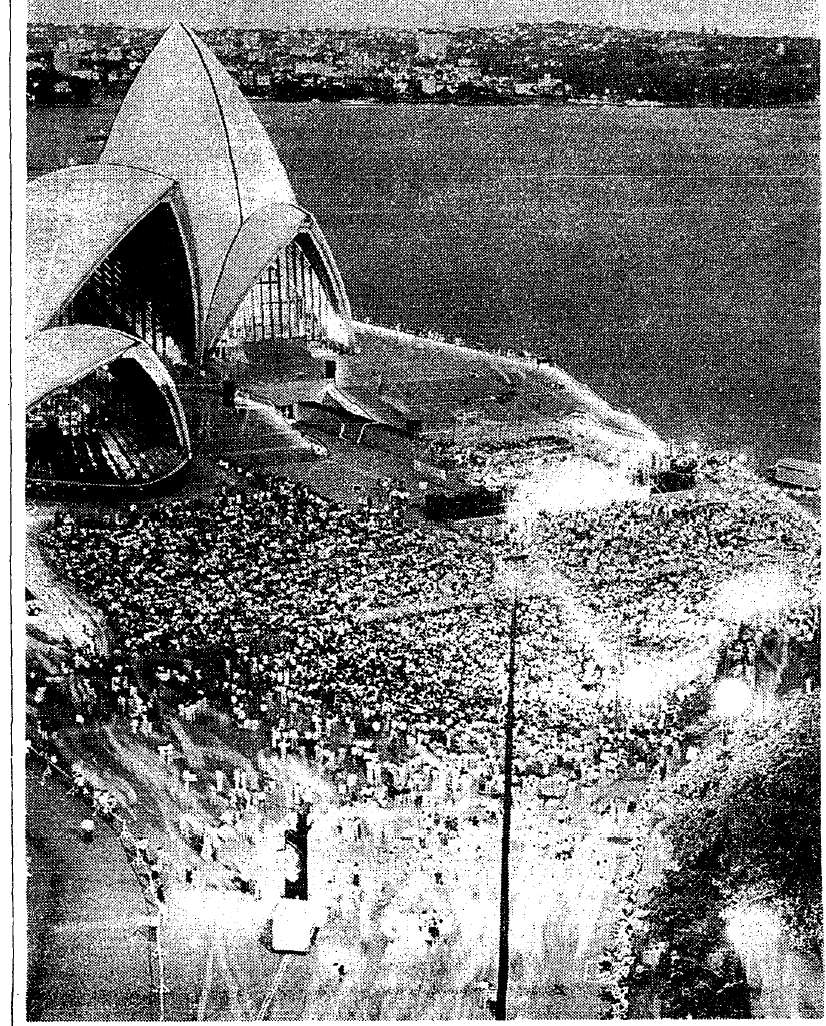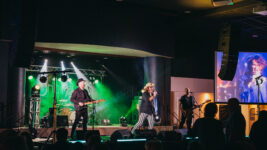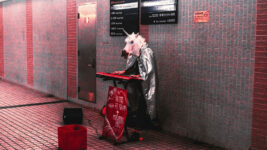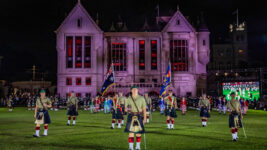News
28 Dec 2012
Summer of ’75. My first theatre lighting gig

Subscribe to CX E-News
28 DEC 2012
By Julius Grafton
Somehow as a 17 year old I found myself convincing adults I could do a mans job of something I’d never done before. Bob Maza had been appointed to the Black Theatre in Redfern, which was fashioned inside an old printing factory. He was to direct a new play by Bobby Merritt, written while he was in jail.
‘The Cakeman’ was about a bible loving mother (the adorable Justine Saunders) with an alcoholic father, and the intervention of whites – in this case, professional actors Max Cullen and Danny Adcock.
Thankfully Maza saw something in me and had faith in me as his new lighting designer, and gave me an honest budget from the humble funding for the production, which was to run across January. It helped that I went into the deal determined to be open and honest with Maza, who was a large happy black guy with eyes that just saw through you.
The theatre was an open space with scaffold seating on three sides, random cushions made it bearable for the audience. My challenge: day scene; night scene, drama component and a campfire.
Consulting Richard Pilbrow’s Stage Lighting (1970 edition) I knew I needed fresnels with barndoors, and a lot of them. Because the Builders’ Labourers Federation were supporting the theatre, a grid of 2” scaffold pipe was easy to arrange, once I sketched the layout.
I was working part time for Strand Electric in Artarmon, and my mentor and boss Rob Nicholls assured me he could make it all work within my budget. I allowed myself $100 a week, and handed the rest to the Rank Strand organisation. Rob’s lighting hire department set the standard for everyone to follow – each light came with a hook, a gel frame, and a thirty foot cable.
For control I had a 10/20 – a hybrid dimmer rack with control surface in one bulky steel box. Sadly I can’t find a photo of this – it had two presets, ten dimmers, and 20 outlets – each with a switch. You could switch an outlet to 240 volts from the dimmer, and then use the dimmer to control the second outlet assigned to that dimmer.
With planning, you could fade up half your outlets – ideal for a night or day choice where you never used both. Because I was limited to 20 total circuits, with a maximum of 10 for night and 10 for day, Patt 123 500 watt fresnels were the only choice. Four could be connected to each channel, but I used 3, attempting to light my stage for an audience on 3 sides.
After many nights of focus, it came together!
I did it all myself, including the very illegal hookup of three phase, where I took the Wilco 530 3 phase plug off the supplied extension cable, and hot wired the three actives, one neutral and an earth into the upstairs fuseboard. I load tested the system through focus nights. Because the building was a disused printing factory, and upstairs was empty, it had enough mains power for anything.
Bob Maza laid a floor of brown hessian to simulate the bare earth of the outback. We needed a convincing campfire, so I got some 40 watt fluorescent starters, and wired each of them between mains active and a 40 watt red globe. Some red cellophane amongst a pile of sticks, with the flickering lamps underneath drew acclaim from the company, who were convinced I knew my craft.
One problem remained, namely how to place the campfire in the middle of the hessian during a scene change. My ingenious solution was to run figure 8 (twin flex) cable under the hessian to a hole in the middle, and do a quick ‘hot wire’ to the lighting circuit. This proved tricky to do by torchlight, torch in mouth, twist wires, apply a little electrical tape, and pray no one stepped on the semi-live connection in the scene. Race back to the bio box, conveniently located in a disused dumb waiter shaft, and apply 240 volts. Fire lights up!
It goes without saying, the circuit needed to be unplugged and isolated when not in use, since there were two bare ends of electrical cable sitting on the floor of the set. I also took extra care not to physically connect it until I was safety back in the box after wiring it up, since a lighting guy being electrocuted in the blackout wasn’t in the script.
We bonded as a company, had nice picnics and BBQs, and I enjoyed the loving vibe of a funded theatre production that had good reviews and reasonable success.
Probably typically the theatre itself lurched from funding crisis to political disarray, moreso because it was mired in the mess that is indigenous affairs in Australia then – and today.
I bumped into some of the company in the years that followed, and didn’t pursue theatre lighting because rock and roll was much more fun. I was eternally thankful for the opportunity, and the learning that came with it. Besides my psychedelic lightshow duties, I also did a Sunday night gig at Peter Day’s Kirk Gallery on Cleveland street, which featured mostly folk music. I enjoyed lighting those shows using the terrific height of the old church to send long beams and dissolve colours. I used slow colour wheels as colour changers, and made gobos. But that’s another story.
Below: My first crit. Romola Costantino says ‘thoroughly efficient lighting’! Thank you…..
Subscribe
Published monthly since 1991, our famous AV industry magazine is free for download or pay for print. Subscribers also receive CX News, our free weekly email with the latest industry news and jobs.






